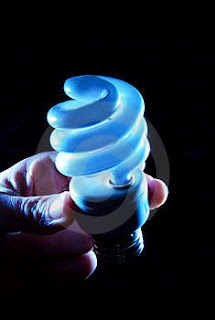
It is nearly common knowledge by now that if you are looking to make yourself a more green home and be a more ethical consumer who relies on more energy efficient habits you should be taking out those old, standard incandescent light bulbs. In place of the traditional light bulbs there are two choices that come in the way of CFLs and LEDs. While both are much more efficient at illuminating your home, and save you at least 75 percent on the amount of electricity your home uses for lighting purposes alone, there are a few drawbacks for the light bulbs of the future. The quality of light they produce is not the same as the yellowish, warm one we are most familiar with from the light bulbs we grew up around. LEDs in particular are really only best for downward lighting fixtures and accent lighting; but there are CFLs that can be comparable to that of incandescent bulbs as long as they rate a certain degree on the Kelvin scale. Yet while CFLs may be a greener choice for lighting fixtures, there has been concern that because they do contain a small amount of mercury they pose a health risk.
It is true that mercury is a toxic chemical that has been linked with brain, kidney, and lung damage and is particularity hazardous to unborn fetuses, but at the same time the amount of mercury inside each CFL bulb is only 2.3 to 3.5 milligrams. To put that in perspective, take into account that a standard household thermometer has about 1,000 times more mercury content. The trouble with the mercury only arises should that bulb break and then the chemical is allowed to leak. Especially as the bulbs die and are then needed to be thrown out, 98 percent of the CFLs are not properly recycled. The people at greatest risk, not to mention the environment through it leaking into the soil and water supply, are those working in landfills and garbage sites as well as wildlife.
That is why it is imperative that people are informed as to where to take these greener CFLs to when they are dead. You should start your search by looking to your regular curbside garbage service and see if they have a program put in place for the disposal of mercury containing light bulbs. Call them up, and if they don't have efforts in place you should encourage them to set some up. You could then contact the local government to find out the nearest place or hazardous waste site that will either pick up your CFLs or allow you to drop them off. Due to the heightened awareness to this very subject big companies such as Home Depot, Wal-Mart, and Ikea are now setting up CFL recycling deposits and recycling events. Home Depot is currently leading the way with the most recycling deposit sites so if you are nearby one of their stores you are set.
Finally you want to always handle your CFL light bulbs, or any other light bulbs for that matter, with care to make sure that they don't break. Should you have an accident and one shatters in your home, don't set off and ring the alarm hoping for the nearest hazardous waste management team to come barging in wearing space-like decontamination suits a la E.T. As long as the amount of mercury that has been leaked is less than 2 tablespoons it is safe for you to take care of yourself (after you get all of children and pets out of the area) as long as you do so in the correct manner. These measures are laid out plain and clear by the Environmental Protection Agency: Mercury Releases and Spills; going to their link and reading up on the protocol will then make you prepared to handle any such situation. And so there is no reason to be afraid of these more energy efficient CFL light bulbs and you should implement them into your green home. You just need to make sure to dispose of them correctly and help spread that awareness to others.

















No comments:
Post a Comment